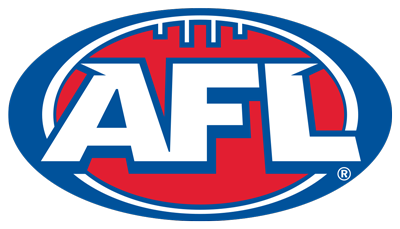How the AFL Evolved: Key Expansions, Strategies, and Player Initiatives
Last updated on November 28, 2024 at 15:20 pm
Posted on November 17, 2024 at 04:56 am
The Australian Football League (AFL), originally established as the Victorian Football League (VFL) in 1896, has expanded into a thorough national league incorporating numerous teams across Australia, including recent additions like the Gold Coast Suns and Greater Western Sydney Giants. It also introduced the AFL Women's league (AFLW) in 2017 to boost female participation in the sport. Through initiatives such as the AFL Draft and salary cap regulations, the league maintains a competitive balance, ensuring that all teams have a fair chance at success. Further exploration will reveal how these and other efforts foster sustained growth and fan engagement within the league.
Evolution of AFL Leagues
Tracing the growth of AFL leagues reveals a remarkable journey of adaptation and expansion. Originating as the Victorian Football League (VFL) in 1896 with just eight clubs, the league has grown into what is now known as the Australian Football League (AFL), a robust embodiment of Australian rules football.
The transformation from a state-based competition to a national spectacle was marked by the renaming of the VFL to the AFL in 1990, a strategic move that heralded the inclusion of teams from across Australia, including the Adelaide Crows and Fremantle Dockers.
This expansion continued into the new millennium with the addition of the Gold Coast Suns and Greater Western Sydney Giants, further extending the league's geographical and cultural footprint.
The introduction of the AFL Women's league (AFLW) in 2017 was a pivotal development, underscoring the league's commitment to inclusivity and the promotion of female athletes in Australian rules football.
Central to the AFL's structure is the finals series, an exciting culmination of the season where the top eight teams vie for the coveted premiership.
This playoff system has undergone several modifications to enhance competitiveness and maintain spectator interest, ensuring the league remains at the forefront of Australian sports.
Player Development Initiatives
Focusing on the grassroots level, AFL leagues implement a range of player development initiatives designed to cultivate young talent and increase local participation in Australian rules football. By engaging directly with community clubs, these initiatives lay a strong foundation for nurturing aspiring athletes and integrating them into the sport's culture. This grassroots engagement is essential in making the sport accessible and appealing to a broader demographic.
Central to these initiatives is the AFL Draft system, a significant mechanism for scouting and integrating promising players into professional settings. It guarantees a steady flow of talent, important for the league's health and competitiveness.
Moreover, the establishment of talent pathways, including junior leagues and academies, provides structured environments where young players receive extensive skill development, athletic training, and valuable mentorship. These programs are tailored to refine players' abilities and prepare them for higher competition levels.
Additionally, scholarships play a significant role by offering financial assistance and resources to talented youths, facilitating their progress in the sport.
Meanwhile, significant resources are allocated to coaching education, guaranteeing that coaches at all levels are well-equipped to guide and develop players effectively, thereby enhancing the overall quality of the league's human capital.
Team Collaboration Strategies
Effective team collaboration strategies in AFL leagues are fundamental for enhancing overall team performance and guaranteeing that all members work cohesively towards common objectives.
Strategies such as regular communication and feedback loops are foundational. They allow players and coaching staff to openly discuss performance and rapidly address issues, facilitating a dynamic and responsive team environment.
Utilizing technology, specifically video analysis tools, is another significant strategy. These tools enable the entire team to review game footage together, fostering a collective understanding of tactical strategies and pinpointing areas for improvement. This shared learning experience is essential for synchronizing team efforts and strategies.
Furthermore, establishing clear roles and responsibilities is imperative. It guarantees that each team member knows their specific duties, promoting accountability and alignment with the team's broader goals.
Additionally, team-building activities are employed to strengthen relationships outside the formal settings of training and matches. These activities are instrumental in building trust and camaraderie, translating into better coordination and performance during games.
Regular team meetings to discuss tactics, game plans, and player development are also integral. These meetings reinforce a culture of collaboration, essential for continuous improvement and success in the competitive landscape of AFL leagues.
Fan Engagement Programs
Building on the foundation of team collaboration, AFL leagues also prioritize engaging their fan base through innovative fan engagement programs. These initiatives are pivotal in bridging the gap between the teams and their supporters, creating a vibrant and interactive game-day atmosphere.
Interactive match day experiences are a cornerstone of these programs, offering fans the opportunity to participate in activities and competitions that enhance their connection to the sport and its players.
Furthermore, AFL leagues extend their reach through community outreach efforts, including school programs and local clinics, which not only promote the sport but also strengthen the ties between clubs and their regional communities.
These initiatives are complemented by the use of digital platforms and social media campaigns that provide fans with exclusive behind-the-scenes content, live updates, and a space to share their experiences, further enhancing fan engagement.
Membership drives are another critical aspect, featuring exclusive benefits like access to special events, merchandise discounts, and priority ticketing to foster loyalty and increase involvement.
Additionally, the AFL's commitment to incorporating fan input through organized fan forums and surveys guarantees that their voices are integral in shaping league policies and enhancing the overall fan experience.
Fixture Creation Importance
The importance of fixture creation in AFL leagues cannot be overstated, as it directly influences both the competitive balance of the season and the overall athlete welfare.
Fixture creation is a meticulous process that integrates considerations like player recovery, aiming to minimize fatigue with planned five-day breaks. This strategic scheduling is vital for maintaining high-performance levels throughout the grueling season.
Viewer engagement is another significant aspect shaped by fixture scheduling. The introduction of Super Saturday, which features multiple games on the same day, is a deliberate move to captivate audiences and boost television ratings. This approach not only enhances the fan experience but also maximizes broadcast exposure, benefiting clubs and sponsors alike.
Additionally, match placements are carefully calculated using a weighted rule based on the teams' performances in the previous season. This method guarantees a fair level of competition among teams, which is essential for keeping the league's integrity and interest alive.
Flexibility in scheduling also plays a noteworthy role, allowing for adjustments that accommodate broadcasting needs and unforeseen circumstances, thereby guaranteeing that the AFL remains adaptive and responsive to both on-field and off-field dynamics.
Competitive Balance Maintenance
To guarantee that all teams have a fair chance at success, the AFL has implemented several measures to maintain competitive balance within the league. The salary cap is a pivotal component, designed to prevent wealthier clubs from stockpiling talent, thereby ensuring financial parity and fostering a more level playing field.
This financial mechanism is complemented by the draft system, which strategically allows teams to select new players based on their performance in lower leagues. This helps distribute emerging talent evenly, preventing any single team from becoming disproportionately strong.
Additionally, fixture adjustments play a critical role in maintaining competitive balance. The league employs a weighted rule that considers the previous season's performances, ensuring that stronger teams face weaker clubs more strategically, promoting unpredictability and excitement in each match.
This system of fixture adjustments, including the scheduling of five-day breaks and Super Saturday matches, aims to provide all teams with equal opportunities to recover and compete effectively.
These measures collectively enhance the competitive landscape of the AFL, ensuring that each season remains dynamic and unpredictable, consequently keeping fan engagement high and the spirit of competition alive across all clubs.
Player Performance Analysis
In AFL, player performance analysis is fundamental, leveraging key metrics such as disposals, marks, tackles, and goals to gauge individual contributions on the field. Advanced statistics further enhance this evaluation by providing insights into player efficiency and movement patterns, which are essential for developing effective team strategies.
These analytics are integral not only for coaches and players but also for fans who engage in fantasy football, where such data influences team selection and management.
Player rankings are another significant aspect, formulated by synthesizing performance indicators to compare and contrast players across the league. This ranking system aids coaches in making strategic decisions and adjustments to optimize team performance during matches.
Additionally, understanding the impact of injuries is important as they can greatly alter a player's output. Data reveals that players often require several games to return to their pre-injury form, affecting team dynamics and individual performance statistics.
For fantasy football enthusiasts, keeping track of injuries, player form, and upcoming fixtures is paramount. This knowledge helps in crafting a more competitive team by strategically selecting players based on current performance and potential future output, making player performance analysis indispensable in the domain of AFL.
Sporting Culture Fostering
Australian football embodies more than just a game; it serves as a cultural linchpin that strengthens community bonds and nurtures a rich sporting heritage. The sport thrives on a foundation laid by grassroots clubs, where local talents are honed and a sense of belonging is fostered.
These clubs are essential in shaping not only athletes but also supportive community members who cherish and uphold the values imparted through the sport.
The AFL's commitment to fostering a vibrant sporting culture is evident through several key initiatives:
State Leagues and Clubs Joined: These leagues enhance local rivalries and foster community pride, with clubs joined in these competitions maintaining rich traditions and robust fan bases.
Community Engagement: Through targeted initiatives, the AFL connects fans and communities, emphasizing the social and cultural significance of football. Events and activities are organized to engage fans of all ages, promoting inclusivity and participation.
Celebration of Cultural Heritage: The league actively promotes and participates in cultural festivals that celebrate Australian football, reinforcing the sport's identity and promoting values like teamwork, resilience, and sportsmanship.
Through these efforts, AFL leagues not only entertain but also enrich the sporting culture and community life in Australia.
_________












